Hand Weaving a Kanikar Shawl
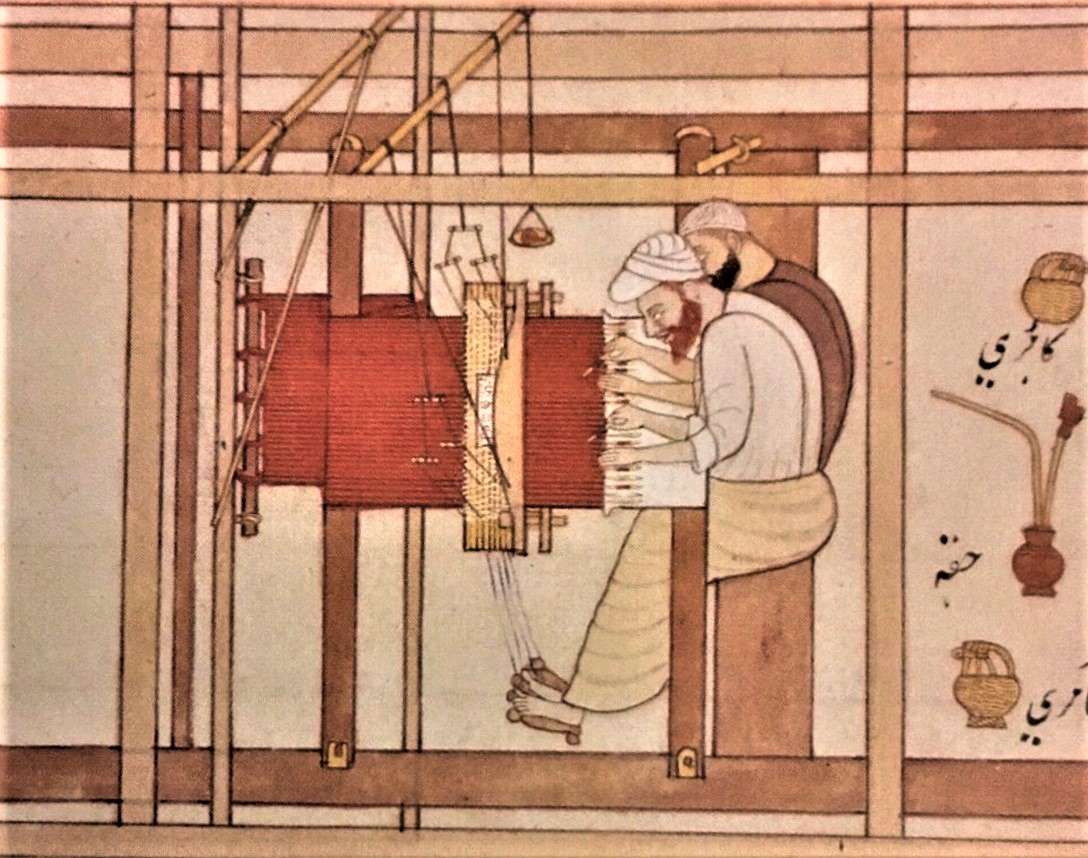
Old painting of Kani Weavers at the loom
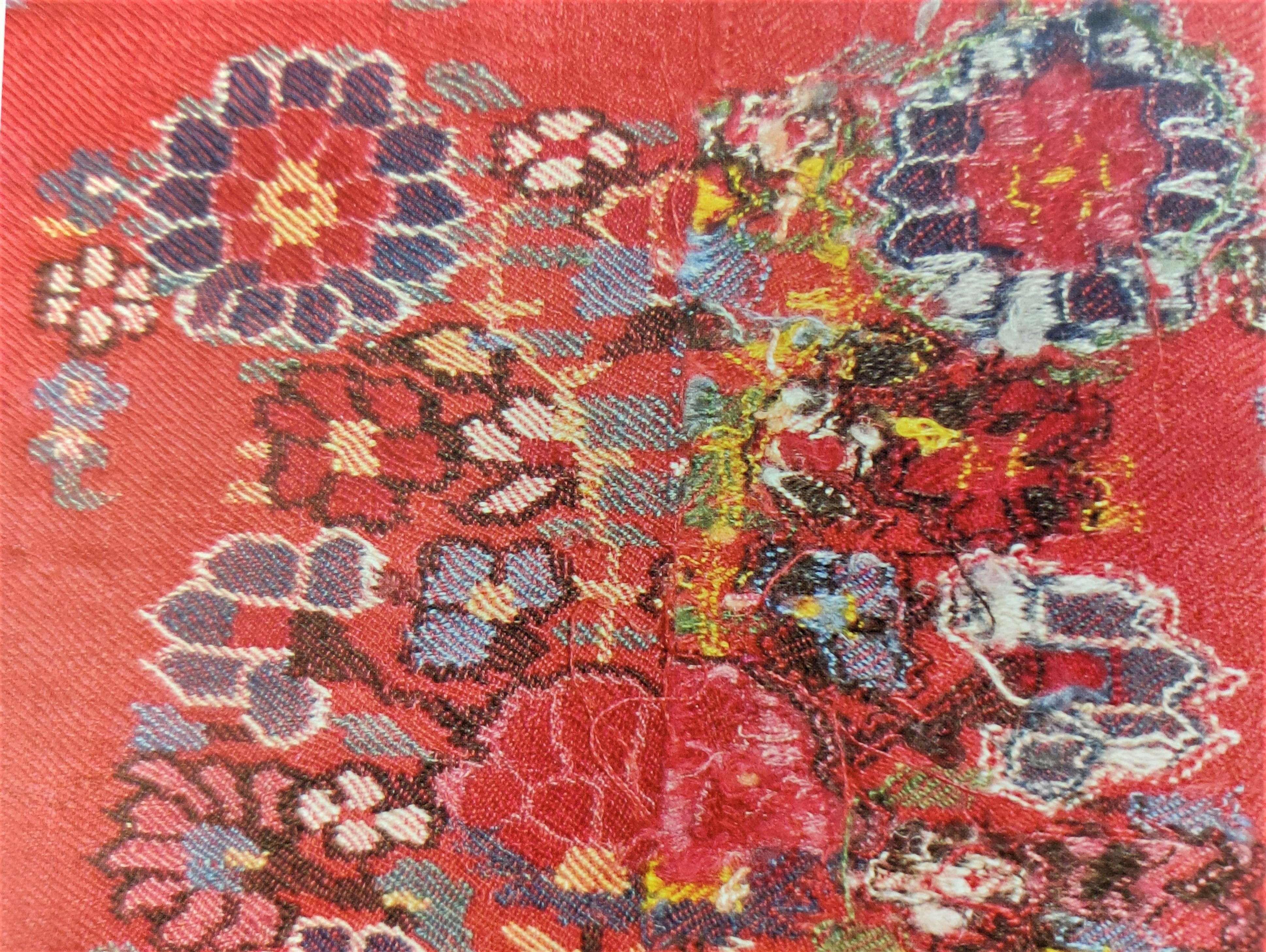
Front and back of old Kani shawl
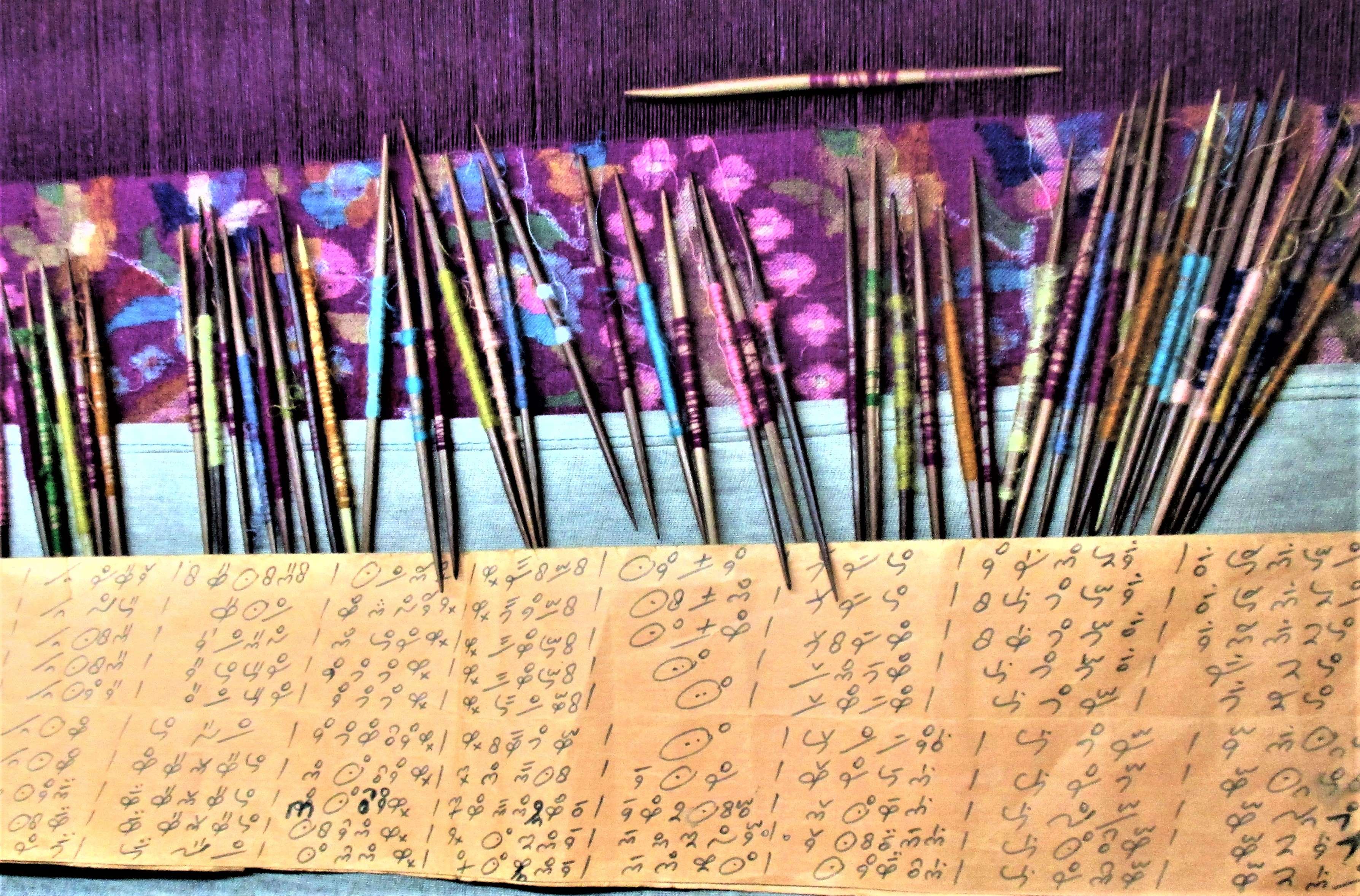
Taleem or Pattern and colour manual
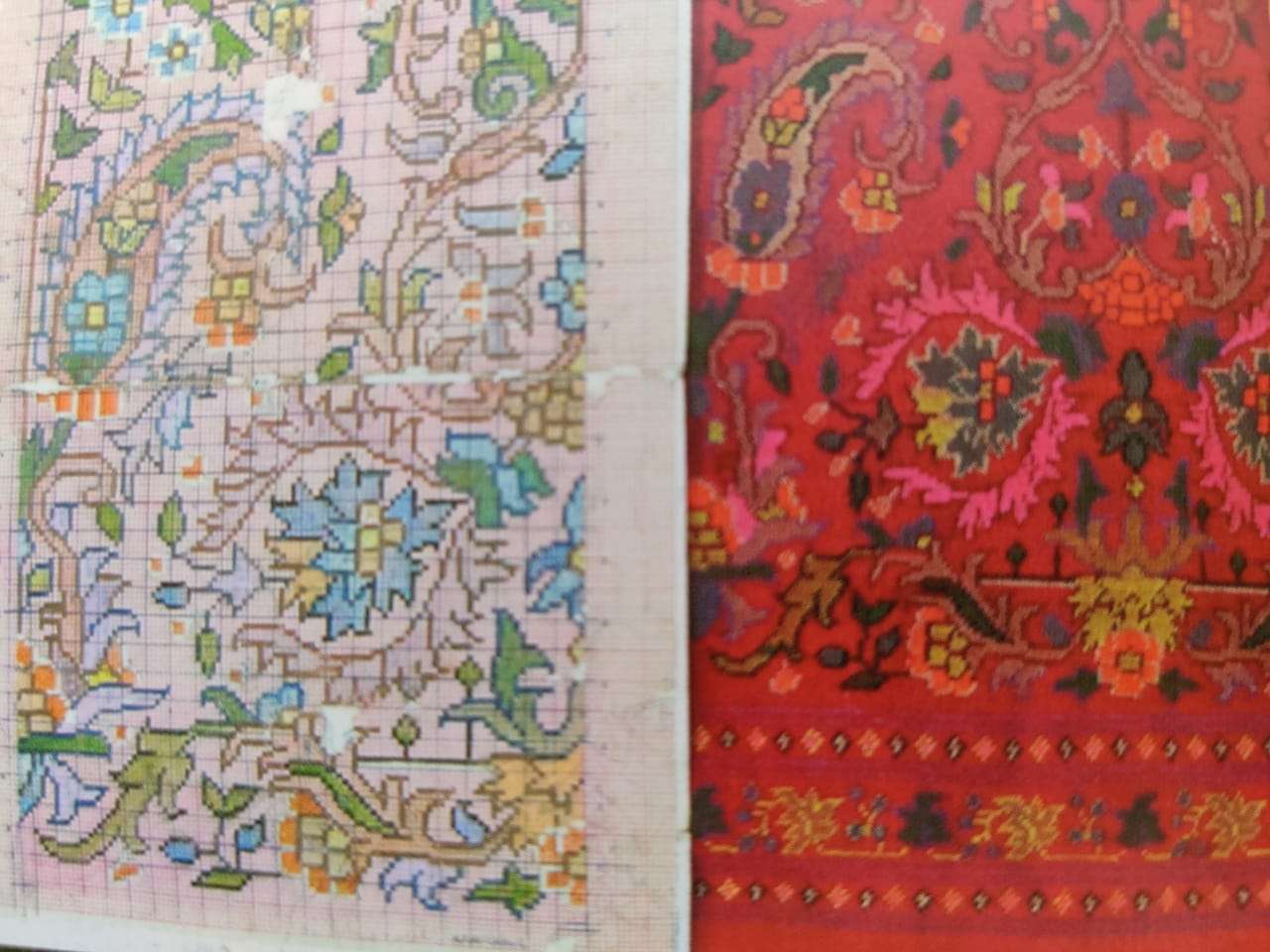
Shawl pattern on graph and same shawl
Weaving was an act of worship, a true labour of love, for it took several months to years for two weavers (khandwaw) to weave a single shawl one stitch at a time. The older, intricate kanikar shawls were the ultimate in weaving, where every element of the design was also outlined. The same technique was used in Dacca and Benares jamdanis. The incomparable beauty of some of the finest examples makes one wonder if it was human hands that really created them.
The tedious kani technique involves insertion of the weft (baana) threads into the pre-assembled warp (taana) using chiselled floating wooden spools, called tuji or kani, that have coloured pashmina wrapped around them. Any number of colours and tujis can be used as every stitch is woven by hand. The weaving is done in 2/2 twill in a patterned shawl, where the adjacent coloured wefts are interlocked, forming a two-coloured ridge at the back (see picture). The thicker weft threads that form the pattern are woven back and forth around the thinner warp threads, where that colour is needed. Monumental patience is required from the karigar as it takes a long time before one all-over patterned shawl is completed.
In Europe, from mid-18th century, Kashmir shawl imitations were woven on draw-loom and later the French Jacquard loom mechanically, using punched cards, with threads going from one edge to the other. The loose threads at the back were trimmed manually afterwards. It was really from the back that a handmade Kashmir kani could be distinguished from its mechanical European copy.
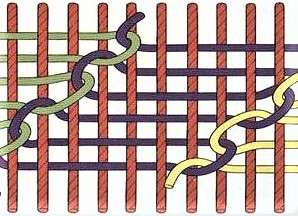
Kani Double Interlocking Twill weave
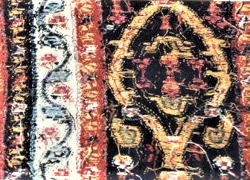
Reverse - Interlinked colour wefts form a ridge
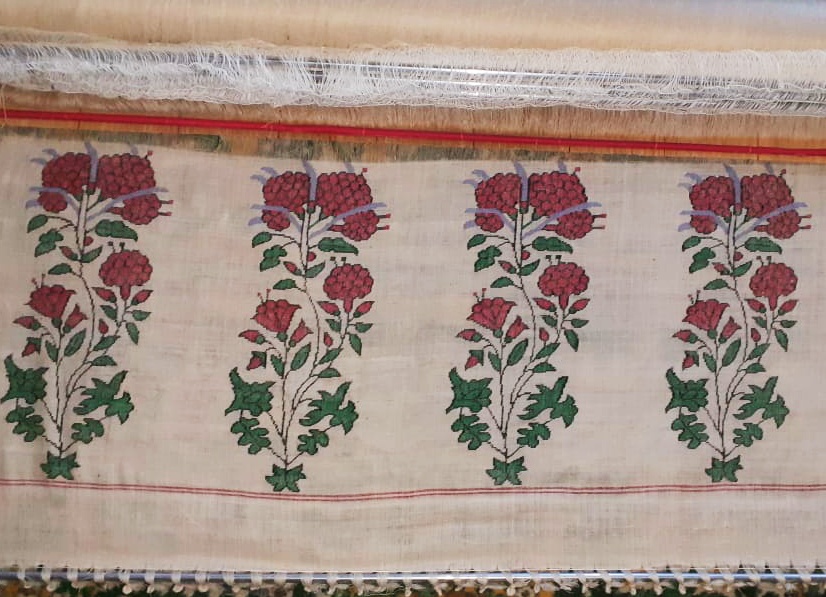
Kani Palledar shawl on the loom
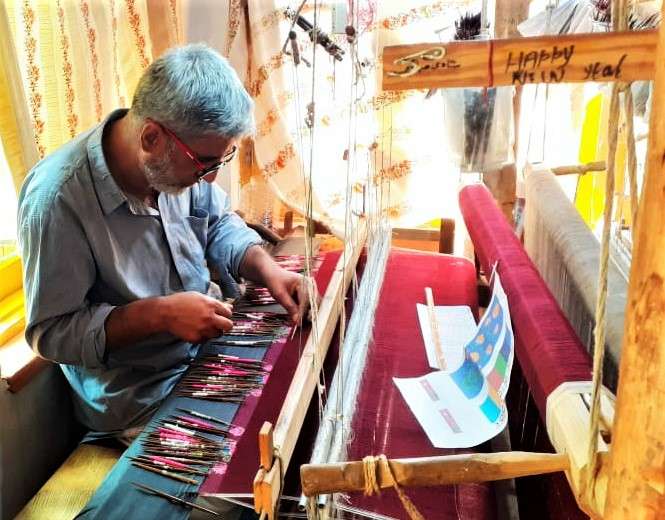
Master Kani shawl weaver at loom
